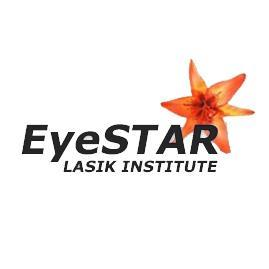

EyeSTAR LASIK Institute

Presby-LASIK and Monovision

Presbyopia
Presbyopia is an eye condition that typically occurs after the age of forty. It results from the loss of elasticity in the lens of the eyes and the loosening of the ligaments that stretches the lens (which became bigger through years) for accommodation. Because it is age-related, there is no way to prevent Presbyopia from setting in. Presbyopia mainly affects reading. When your lenses lose elasticity, they have a much harder time focusing on things close by. Thus, the material you are reading or looking at will need to be held farther and farther away. The eyes have to work harder to focus, which can cause fatigue and headache. Everyone experiences presbyopia to some extent as they age.
Symptoms of Presbyopia
The main symptom of Presbyopia is blurriness of near objects and an inability to focus on things close to your eyes. Along with this comes headache and eye-fatigue, both of which can be aggravated by trying to read or view things in dim light. Presbyopia can be easily diagnosed through an eye exam.
Presby-LASIK
Presby-LASIK is the newest laser treatment for presbyopia.
Presby-LASIK is a special use of Q-LASIK where corneal curvature can be custom designed to the patients needs. We prefer to fully correct the dominant eye (the eye you prefer when taking pictures) for distance vision. The other eye's corneal ablation pattern is specially designed to have zones for both close and distance vision with an optimization process for the natural pupil size. Through this process patients can experience a corneal solution for their presbyopia problem without sacrificing the distance vision quality. That means with Presby-LASIK patient can see well both distant and close objects without any glare and haloes, and safely drive even in difficult night conditions.
Who is not eligible for Presby-LASIK?
- Patients younger than 40 years old.
- Patients not found suitable for LASIK.
- Cataract patients.
Monovision
During childhood, our eyes have the ability to focus on objects as close as our nose to objects and also to objects that are very far away.
A young person without any refractive errors can see clearly the objects at 25 cm distance to infinity. The lens in our eyes acts as a focusing lens in a camera. When the objects are near, the lens thickens and focuses the light rays on the retina to obtain a clear image. As each year passes, that ability to "focus" decreases. But typically, by the time we reach our forties, we need an aid, such as reading glasses or bifocals, to focus on objects near to us. This condition is called presbyopia.
When a nearsighted (myopic) person reaches the age of forty, they too experience presbyopia. Because the nearsighted eye has a natural focal point "at near", many nearsighted presbyopes can remove their glasses or contact lenses and read or do close work comfortably. Many myopes choose to wear bifocals to eliminate the need for removing and replacing their glasses. If you plan to have refractive surgery to eliminate or reduce your myopia, like everyone else, you will still experience presbyopia sometime in your forties.
Monovision addresses the problem of presbyopia that most people start to encounter at the age of 40-45 when they begin to need reading glasses or bifocals for close vision. With monovision, the dominant eye (the eye you would use to focus a camera) is focused for distance vision, and the non-dominant eye is focused for near to intermediate vision. This can be done with contact lenses, refractive surgery (LASIK) or intraocular lenses.
With both eyes open, near, intermediate and far objects can be seen well without the aid of glasses.
Monovision certainly isn't appropriate for everyone. However, when paired with the right person, it can be a great fit. Monovision is a blend of near and distance vision, and is ideal for people with an active lifestyle. However, there is a caveat to consider: since it is a compromise, most people's vision isn't perfectly crisp up close or far away. Instead, it offers the best of both worlds.
Most people who opt for monovision go through a brief period of adaptation as the brain "learns" to see with the eye best suited for the task. If you're considering refractive surgery as a permanent form of monovision, it might be best to consider a "test drive" with contact lenses before making a decision. About 75% of people like monovision. We test our patients with contact lenses before laser treatment to see whether they will be able to adapt to monovision.
Contact
WhatsApp: +90 - 212-361-5000
WhatsApp: +90 541-500-1-900
Phone: +90-212-361-5000
Address: Kocatepe Mah. Cumhuriyet Cad. No 27/1-2 Taksim - Beyoglu Turkiye
Copyright 2025 Tıbbi Metınler Uz.Dr.İsmail G Çelikkol
